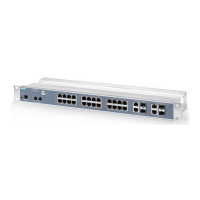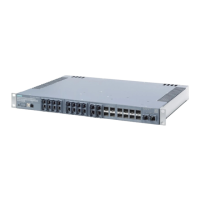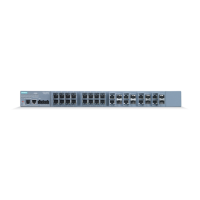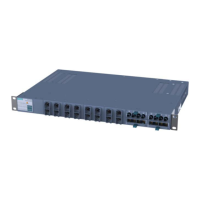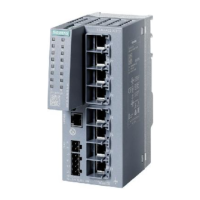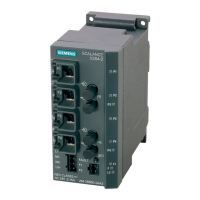Layer 3 functions
9.3 OSPFv3 (IPv6)
SCALANCE XM-400/XR-500 Command Line Interface (CLI)
518 Configuration Manual, 11/2015, C79000-G8976-C252-10
Call up the command with the following parameters:
area <AreaID> summary-prefix
<IPv6-Prefix> <Prefix-Length>
[{
allowAll | denyAll | advertise | not-advertise
}]
[
Translation { enabled | disabled }
]
The parameters have the following meaning:
Area ID Specify the ID in the IPv4 address
format
x.x.x.x = 0 ... 255
enter a valid IPv6 address
Number of bits belonging to the prefix
1 ... 128 bits
128: The node (host) itself
The backbone area generates an LSA message of
type 5 for the address range. LSA messages of
Type 7 also generated for this address range in the
only with backbone area
No LSA is of type 5 or type 7 is generated for the
only with backbone area
The address range is advertised outside the areas.
In the backbone area, the router generates an LSA
message of type 5.
If the Area ID is not 0.0.0.0, the router generates
an LSA message of Type 7 in an NSSA.
-
No LSA messages of type 5 are generated in the
backbone area. The NSSAs connected to the
backbone area generate LSA messages of type 7.
The other areas do not generate any LSA.
-
Keyword for the P bit. The P bit indicates to the
NSSA-ABR whether the LSA message of type 7 is
-
P bit = 1.
LSA message is translated
-
P bit = 0.
LSA message is not translated
-
For information on identifiers of addresses and interfaces, refer to the section "Interface
identifiers and addresses (Page 39)".
The address range is configured.

